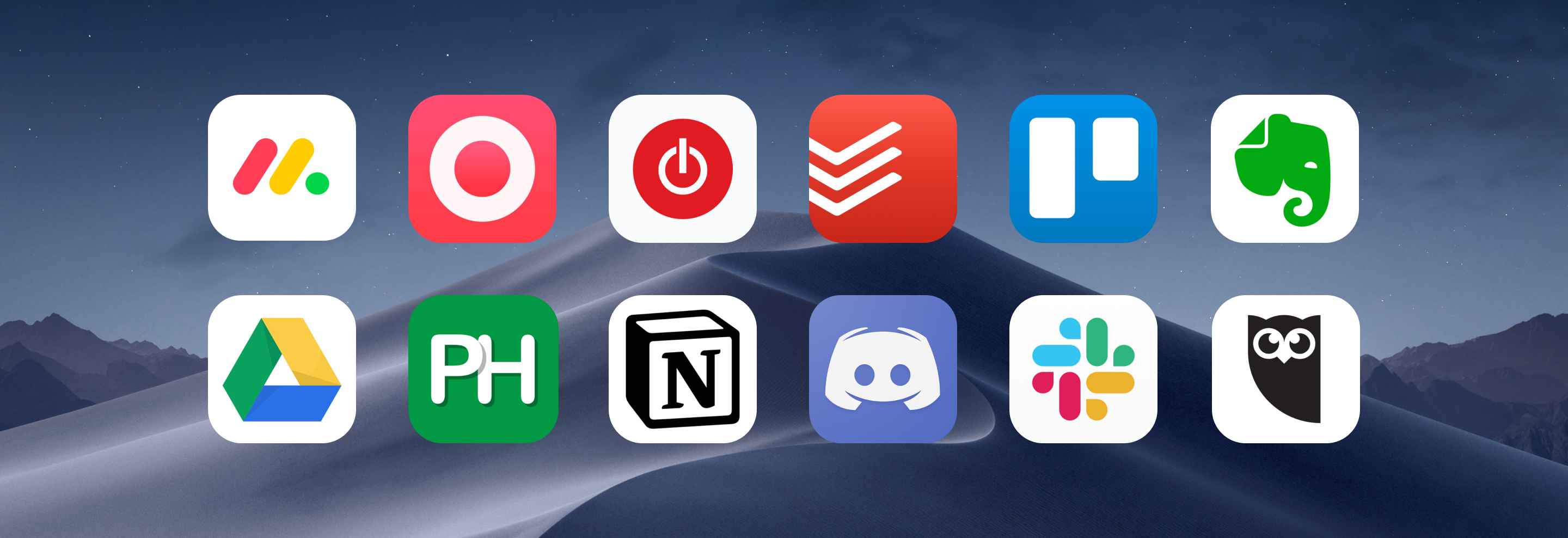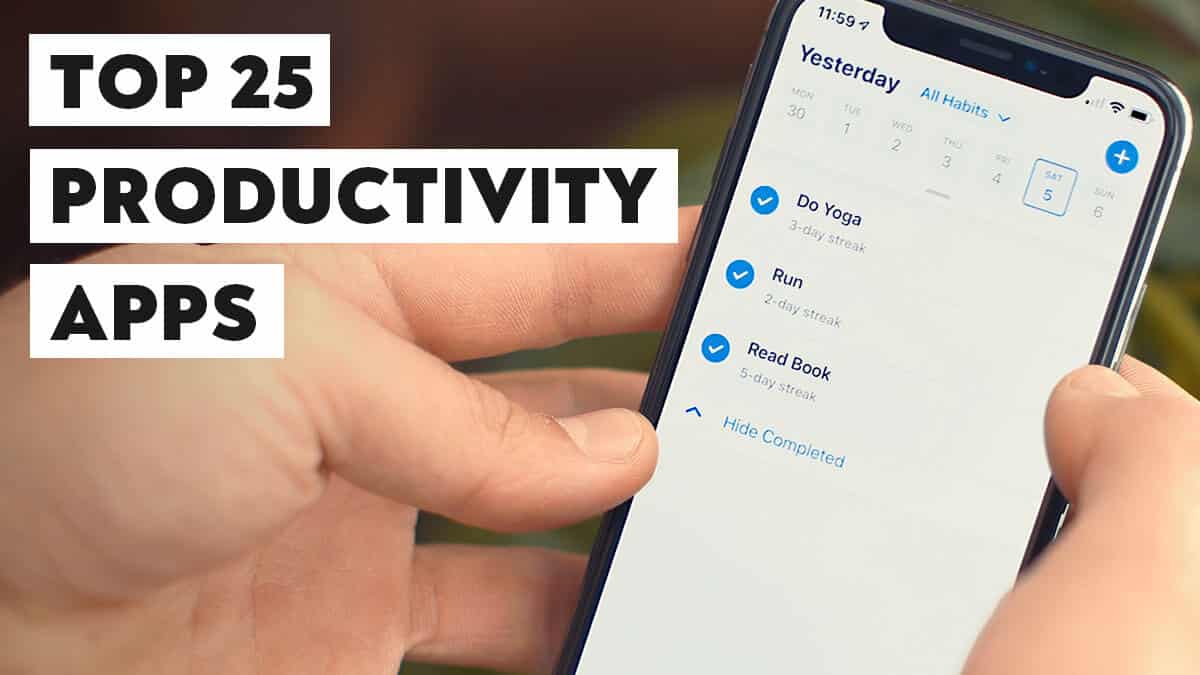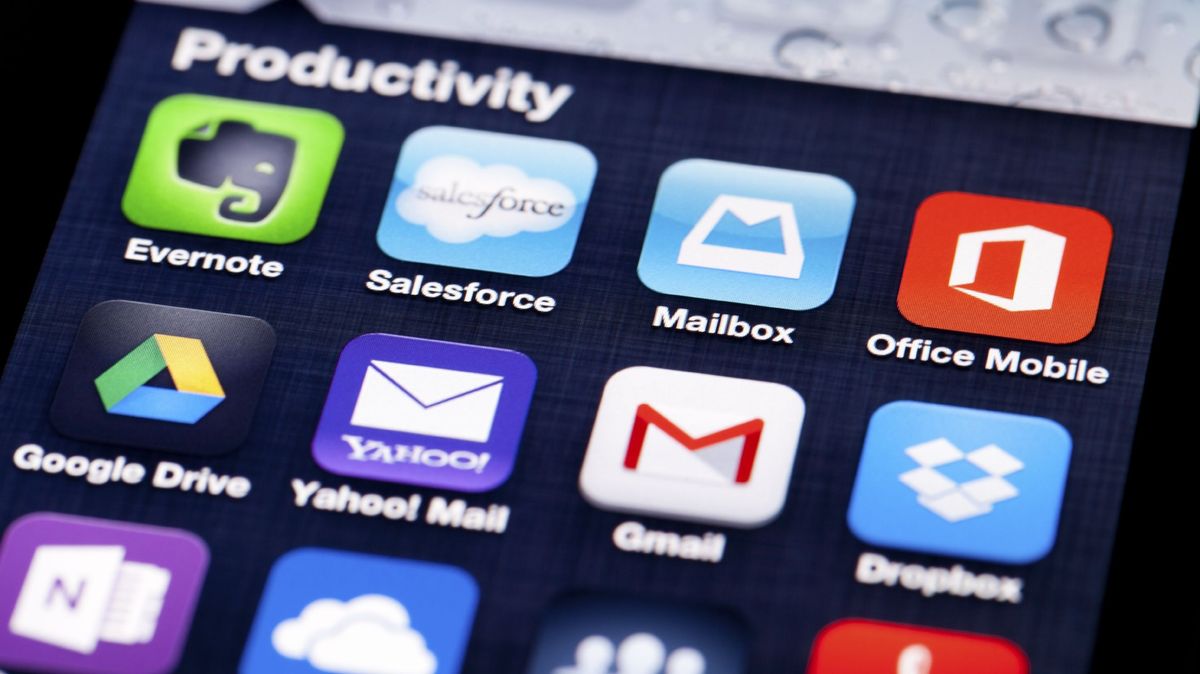Task Management Apps
Best productivity apps – Task management apps have become essential tools for individuals and teams looking to increase their productivity and organization. These apps provide a centralized platform to manage tasks, set deadlines, collaborate with others, and track progress. By leveraging the features offered by these apps, users can streamline their workflows, minimize distractions, and achieve their goals more efficiently.
Popular Task Management Apps
There are numerous task management apps available, each with its unique set of features and capabilities. Some of the most popular options include:
- Todoist: Known for its intuitive interface and extensive customization options, Todoist allows users to create and manage tasks, set priorities, and collaborate with others.
- Asana: Designed for team collaboration, Asana enables users to assign tasks, set deadlines, track progress, and communicate with team members in real-time.
- Trello: Using a Kanban-style interface, Trello provides a visual representation of tasks, allowing users to organize and track their progress through different stages.
- Microsoft To Do: Integrated with other Microsoft products, Microsoft To Do offers a simple and user-friendly interface for managing tasks, setting reminders, and creating lists.
- Google Tasks: As part of the Google Workspace suite, Google Tasks allows users to create and manage tasks, set deadlines, and collaborate with others through Gmail and Google Calendar.
Benefits of Using Task Management Apps
Task management apps offer numerous benefits to users, including:
- Improved Organization: These apps provide a centralized platform to manage tasks, reducing the risk of forgetting or losing track of important responsibilities.
- Increased Productivity: By streamlining workflows and minimizing distractions, task management apps help users focus on completing tasks more efficiently.
- Enhanced Collaboration: Many task management apps allow users to collaborate with others, assigning tasks, setting deadlines, and tracking progress together.
- Real-time Progress Tracking: These apps provide real-time updates on the progress of tasks, allowing users to monitor their performance and make adjustments as needed.
- Customization: Many task management apps offer customizable features, allowing users to tailor the app to their specific needs and preferences.
Considerations When Choosing a Task Management App
When choosing a task management app, there are several factors to consider, including:
- Features: Consider the specific features you need, such as task creation, collaboration, deadline setting, and progress tracking.
- Interface: Choose an app with an intuitive and user-friendly interface that aligns with your workflow and preferences.
- Integration: Determine if the app integrates with other tools you use, such as email, calendar, or project management software.
- Pricing: Consider the cost of the app and whether it fits within your budget.
- Support: Ensure the app offers adequate customer support and resources to assist you with any issues or questions.
Note-Taking Apps: Best Productivity Apps

Note-taking apps are essential tools for productivity, allowing you to capture, organize, and access information efficiently. With various options available, it’s important to choose the one that aligns with your specific needs and workflow.
Evernote
- Comprehensive note-taking app with a wide range of features.
- Supports multiple note formats (text, audio, video, web clippings).
- Powerful search and organization capabilities.
- Collaboration tools for sharing and editing notes with others.
Notion
- All-in-one workspace that combines note-taking, task management, and collaboration.
- Flexible and customizable interface allows you to create custom databases and workflows.
- Real-time collaboration and version history.
- Can be overwhelming for users who prefer a simpler note-taking experience.
Bear
- Minimalist and distraction-free note-taking app.
- Markdown support for structured note-taking.
- Powerful tagging and linking system.
- Limited collaboration and organization features.
OneNote
- Note-taking app from Microsoft, tightly integrated with other Office apps.
- Freeform note-taking with digital ink, handwriting recognition, and audio notes.
- Extensive organization options, including notebooks, sections, and pages.
- Can be slow and resource-intensive on some devices.
Standard Notes
- Open-source and privacy-focused note-taking app.
- End-to-end encryption for secure note storage.
- Markdown support and customizable themes.
- Limited collaboration and synchronization features.
Calendar and Scheduling Apps

Calendar and scheduling apps are essential for staying organized and productive. They help you keep track of your appointments, meetings, and tasks, and can also help you collaborate with others.
There are a number of different calendar and scheduling apps available, each with its own set of features. Some of the most popular apps include Google Calendar, Apple Calendar, and Microsoft Outlook.
When choosing a calendar and scheduling app, it’s important to consider your needs and preferences. Some things to keep in mind include:
* Features: What features are important to you? Do you need a calendar that integrates with other apps, or one that allows you to share your schedule with others?
* Ease of use: How easy is the app to use? You don’t want to spend hours trying to figure out how to use your calendar.
* Integrations: Does the app integrate with other apps that you use? This can be a major convenience, especially if you use other productivity apps.
Collaboration and Communication Tools
Collaboration and communication tools are essential for boosting productivity in today’s fast-paced business environment. These tools enable teams to work together more efficiently, share ideas, and streamline communication, leading to increased productivity and improved outcomes.
There are numerous collaboration and communication tools available, each with its own unique set of features and benefits. Some of the most popular tools include:
- Slack: A popular instant messaging and collaboration platform that allows teams to communicate and share files in real time.
- Microsoft Teams: A comprehensive collaboration platform that includes instant messaging, video conferencing, file sharing, and project management tools.
- Google Workspace: A suite of productivity tools that includes Gmail, Google Docs, Google Sheets, and Google Drive, all of which allow for real-time collaboration and file sharing.
- Asana: A project management tool that helps teams track their progress, assign tasks, and collaborate on projects.
- Trello: A visual project management tool that uses boards and cards to represent tasks and projects, making it easy to track progress and collaborate with others.
These tools can significantly improve productivity by facilitating teamwork and streamlining communication. They allow teams to:
- Communicate and share ideas more easily
- Collaborate on projects and tasks in real time
- Track progress and manage projects more effectively
- Share files and documents securely
- Reduce the need for meetings and emails
However, it’s important to note that collaboration and communication tools can also have some drawbacks. These include:
- Increased distractions: Constant notifications and messages can be distracting and hinder productivity.
- Information overload: With so many tools and channels, it can be difficult to stay organized and avoid information overload.
- Security concerns: Sharing sensitive information through collaboration tools can pose security risks.
Overall, collaboration and communication tools can be a valuable asset for businesses looking to improve productivity and teamwork. By carefully selecting the right tools and implementing them effectively, businesses can overcome the potential drawbacks and reap the benefits of these powerful tools.
Time Tracking and Analysis Apps

Time tracking and analysis apps are tools that help users track how they spend their time. This information can then be used to identify areas for improvement, such as reducing wasted time or increasing productivity.
There are a variety of time tracking and analysis apps available, each with its own features and benefits. Some of the most popular apps include:
- Toggl
- RescueTime
- Clockify
- Harvest
- Time Doctor
These apps typically offer a range of features, such as:
- Time tracking: The ability to track how much time is spent on different tasks or projects.
- Activity monitoring: The ability to track what activities are being performed, such as working on a specific document or browsing the web.
- Reporting: The ability to generate reports that show how time is being spent.
- Integration with other apps: The ability to integrate with other apps, such as project management apps or CRM systems.
Time tracking and analysis apps can be a valuable tool for anyone who wants to improve their productivity. By tracking how they spend their time, users can identify areas for improvement and make changes to their workflow accordingly.
Advantages of using time tracking and analysis apps, Best productivity apps
- Increased productivity: Time tracking and analysis apps can help users to identify areas where they are wasting time. This information can then be used to make changes to their workflow and improve their productivity.
- Improved time management: Time tracking and analysis apps can help users to better manage their time. By tracking how they spend their time, users can identify areas where they can be more efficient.
- Reduced stress: Time tracking and analysis apps can help users to reduce stress by providing them with a clear picture of how they are spending their time. This information can help users to identify areas where they can take breaks or delegate tasks.
Disadvantages of using time tracking and analysis apps
- Time consuming: Time tracking and analysis apps can be time consuming to use. Users need to take the time to track their time and then analyze the data. This can be a significant investment of time, especially for users who are already busy.
- Privacy concerns: Time tracking and analysis apps can collect a lot of data about how users spend their time. This data can be used to improve the app’s features, but it can also be used to track users’ activities. This can be a concern for users who are concerned about their privacy.
Automation and Workflow Apps

Automation and workflow apps are powerful tools that can help you boost productivity by automating repetitive tasks and streamlining processes. These apps can be used to automate a wide variety of tasks, such as sending emails, scheduling appointments, and managing social media accounts.
By automating tasks, you can free up your time to focus on more important things. Automation and workflow apps can also help you improve accuracy and efficiency by eliminating human error.
Benefits of Automation and Workflow Apps
There are many benefits to using automation and workflow apps, including:
- Increased productivity
- Improved accuracy and efficiency
- Reduced costs
- Improved customer service
- Increased employee satisfaction
Challenges of Automation and Workflow Apps
There are also some challenges to using automation and workflow apps, including:
- The initial investment in time and resources can be significant.
- The apps can be complex to set up and use.
- The apps can be difficult to integrate with other systems.
- The apps can be vulnerable to security breaches.
Despite these challenges, automation and workflow apps can be a valuable tool for businesses of all sizes. By carefully considering the benefits and challenges, you can decide if automation and workflow apps are right for your business.
Project Management Apps
Project management apps help teams stay organized and achieve their goals. They provide a central place to track tasks, deadlines, and communication, and can help teams collaborate more effectively.
Comparison of Project Management Apps
Here is a table comparing different project management apps:
| Feature | Asana | Basecamp | Trello | Jira | Monday.com |
|---|---|---|---|---|---|
| Task management | Yes | Yes | Yes | Yes | Yes |
| Collaboration | Yes | Yes | Yes | Yes | Yes |
| File sharing | Yes | Yes | Yes | Yes | Yes |
| Time tracking | Yes | Yes | No | Yes | Yes |
| Pricing | Free plan available; paid plans start at $10.99/month | Free plan available; paid plans start at $99/month | Free plan available; paid plans start at $10/month | Free plan available; paid plans start at $10/month | Free plan available; paid plans start at $8/month |
| Customer support | Email, chat, and phone support | Email and chat support | Email and chat support | Email, chat, and phone support | Email, chat, and phone support |
When choosing a project management app, it is important to consider the features that are important to your team. Some teams may need a simple task management tool, while others may need a more robust solution with features such as time tracking and collaboration.
